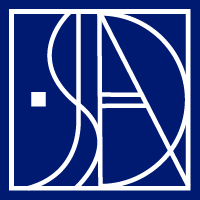MAPPING A CONVERGENCE

Mapping a Convergence
If we mapped the converging paths of automation affecting the human workforce – the roll out of the vaccine, the return to schools, and the timing of construction leading to the reopening of businesses – we would arrive at a graph that points to the importance for executive teams to take bold action now. Why? Because 67% of organizations surveyed by CBRE anticipate all employees will have access to the office by mid-2021 (see link below). What functions will that office provide? How will it be shaped? At one end of the spectrum, it may be a technology-rich regional team gathering hub, or it may have a blended resimercial meeting space and just-in-time work environments. Each organization will define its own pandemic response – right for its culture and right for 2021.
Many businesses are now only partially operating, and struggle to keep the workplace safe for their employees as they seek to prove they have taken the right measures to properly monitor health and safety threats. Some state-by-state liabilities might delay the return to work, but organizations should not be deterred. Technologies have been created for health monitoring, and now is the time for businesses to create a strategy for their future initiatives and to redefine who they are and who they have become. A positive environment fusing work life with workplace is a central communication tool that clearly expresses the evolved organization: a new cultural hub that defines its renewed mission, values and vision.
Documenting the impact of remote work, the CBRE survey shows that it is a growing phenomenon, with 49% of organizations anticipating 25-75% full-time remote employees. This will have a significant impact on the workplace, such as reducing the need for workstation space. Most importantly, hierarchy has flattened, meaning that employees now have a choice about when and where they work. Since remote working has become a growing trend over the last twenty years, the power has shifted from the organization to the employee when specifying their occupational needs: 73% of organizations will allow for greater employee choice, and that choice will play a large role in the campaign for talent.
To understand employees’ needs, at J S D A we begin by undertaking ethnography and data collection among affected remote workers in disparate locations. Some are bombarded by interruptions from young children, others by urban noise, and some simply don’t have the space to work from home. We survey, observe and interview these people to identify their preferences for remote-work scheduling and frequency of face-to-face team meetings; we expose them to new technology and new platforms that enable communication and processes; we assess the organization’s intended technologies and the timing of these preferences relative to other fluid changes associated with the pandemic.
We then interview the C-suite to clarify their goals and their openness to recreating the office environment and a new work life for the talent of their organization. We observe, learn and understand the culture of that organization, its sense of flexibility and esprit de corps, and endeavour to support the well-being of its employees. We ascertain the work of the organization, observe its transition, provide contingencies for further adaptation and, through spaces and technologies, enable communication in person and between people and groups in the workspace.
These inquiries pinpoint a cumulative consciousness, a direction for the organization to explore. Everyone is orchestrating their own crescendo out of the Covid cacophony, and as we begin, we must realize that change is still occurring. If we ask a question today, the answer will be different when we ask the same question in three months. Whether fully remote or not, organizations that want to secure their position in the marketplace should be engaging in a dialogue with their talent pool and redefining their culture right now. If you wait, you may risk your business. It’s time to get planning digitally.

